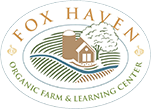Foraging for Mushrooms, Week Two: Cooking Wild Edibles
Our second Fungus Among Us class began in many ways like the first. The group of students assembled in a half-circle of chairs around central tables, which held a variety of mushrooms, tools, and supplies. Today, however, the supplies included familiar items like garlic, butter, onion, lemon juice, and mayonnaise, because today, we were cooking. Harriet described all the steps of preparation while they cooked. Their mother joined them this time, and the two of them prepped, chopped, and talked while the rest of us watched and salivated.

Our first cooking lesson involved “crab” cakes made with Lion’s Mane mushrooms. With my mask on, I smelled nothing at first, and I was not sure at all what to expect from the finished product. I’d grown up in Baltimore and made the mistake once of ordering crab cakes in Arizona, so I was justifiably skeptical of anything other than the real Maryland crab cakes. But my concerns were somewhat relieved when everyone, being Marylanders now, unanimously approved a most generous helping of Old Bay into the mix.
The mushrooms on the table were beautiful, as always. Blue and yellow oyster mushrooms filled a box with the fluffy Lion’s Mane off to the side. One of the students commented that the Lion’s Mane looked like Tribbles; I thought they also resembled a cream-colored Truffula. Very pet-able!
 While Harriet and their mother cooked, the class chatted about various aspects of foraging and mushroom growing. We talked about mushroom communications and feelings, about seasonal wild foods that go well with mushrooms, and about other dishes that Lion’s Mane mushrooms work well in. We discussed fungus growing kits and where to find the best retailers. Harriet went over the most important elements to consider in growing from kits. The world of fungus cultivation is rich with new information for most of us.
While Harriet and their mother cooked, the class chatted about various aspects of foraging and mushroom growing. We talked about mushroom communications and feelings, about seasonal wild foods that go well with mushrooms, and about other dishes that Lion’s Mane mushrooms work well in. We discussed fungus growing kits and where to find the best retailers. Harriet went over the most important elements to consider in growing from kits. The world of fungus cultivation is rich with new information for most of us.
After a while, the smell of the frying patties worked its way through the masks, and our appetites grew. We were invited to come get a ‘crab’ cake and taste the creation. The appearance on the plate was appetizing enough; but when I tasted the cake, I have to say that I was shocked, not because it was good, nor because it tasted just like the Baltimore crab cakes I knew, but because it was even better than the real thing. I am a fan.
 The second of the dishes prepared was pasta with blue oyster mushrooms. We talked more throughout the process, about which mushrooms are most likely to cause irritation or allergic reaction, how to potentially avoid any upset, and about cooking fungus to make it easier to digest. This dish, the pasta, was also delicious, with cream, garlic, onions, and herbs. Again, it was impressive, new, and horizon-expanding. I think we all left the classroom ready to explore more of the world of mushrooms in the culinary arts.
The second of the dishes prepared was pasta with blue oyster mushrooms. We talked more throughout the process, about which mushrooms are most likely to cause irritation or allergic reaction, how to potentially avoid any upset, and about cooking fungus to make it easier to digest. This dish, the pasta, was also delicious, with cream, garlic, onions, and herbs. Again, it was impressive, new, and horizon-expanding. I think we all left the classroom ready to explore more of the world of mushrooms in the culinary arts.
To view the full recipe, go here.

Written by:
Elizabeth Flannery germinated in Baltimore but was successfully transplanted to Frederick County where she completed the spore production phase of her life cycle. Now her pinheads are scattered around the area, happily developing into fruiting bodies of their own.
